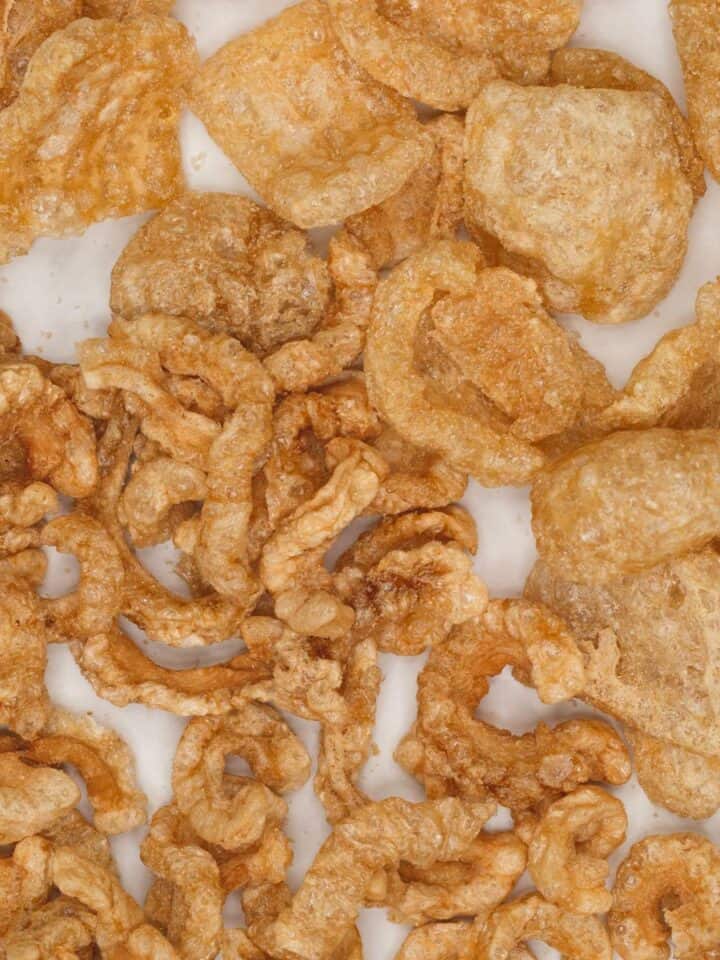Sago, with its unique texture, holds a special place in Filipino cuisine. Learn about its versatile culinary uses, potential health benefits, and a delicious array of Filipino recipes with this beloved ingredient.

Jump to:
What is sago?
Sago is the starch extracted from the pith of tropical palm trees like Metroxylon sagu. They are round and translucent pearls used in desserts and beverages.
In their raw form, they are typically white or off-white with a dry and grainy texture. They become translucent, jelly-like, and slightly chewy once cooked.
What does sago taste like?
It is known for its neutral taste and slightly chewy, gelatinous texture. Although it has no distinctive taste, it can absorb flavors when cooked with other ingredients, like sugar, coconut milk, or pandan leaves. Its unique texture and versatility make it an excellent ingredient in desserts and drinks.
What are the benefits of eating sago?
Sago is a carbohydrate-rich food that is naturally grain-free and gluten-free. It is low in protein, fat, and fiber content, as highlighted by Wikipedia.
Healthline states that although it's not particularly nutritious, it contains antioxidants and resistant starch with potential health benefits. These include reducing blood sugar levels, curbing appetite, and improving digestion.
To maintain a balanced diet, it should be eaten in moderation with other nutrient-dense foods. Consulting with a healthcare professional for individual dietary concerns is advisable.

Are sago and tapioca pearls the same?
Although they may look alike, they come from different sources. Sago pearls are derived from the pith of the stem of sago palm trees, while tapioca pearls are made from cassava root starch.
Sago pearls are usually white or off-white, while tapioca pearls are available in various colors, such as black, commonly used as boba in bubble tea drinks.
Both are usually sold dried, but pre-cooked tapioca pearls are sometimes available. They are cooked the same way and taste similar, though tapioca pearls are chewier.
With their comparable taste and appearance, they are often interchangeable in most recipes.
Buying and storing sago
Sago pearls are sold dried and are available in most Asian grocery stores or online retailers. I personally prefer the smaller varieties as they tend to cook faster.
Check the expiration date on the package and avoid any broken or crushed pearls. Store the raw pearls in a cool, dry place.
If you want to learn how to cook sago, don't miss our step-by-step guide.
For the best chewy texture, consume cooked pearls within a day. As you store them longer, the pearls will stick together. Briefly soak in hot water to separate. for best results, soak them in a simple syrup or brown sugar syrup (arninal) and refrigerate for up to 2 days.
Filipino recipes with sago
Sago is a beloved ingredient, adding a chewy and refreshing texture to desserts and beverages. Here are some examples:
- Ginataang Bilo-Bilo: A warm dessert made with glutinous rice balls, sweet potatoes, saba bananas, jackfruit, and sago simmered in coconut milk.
- Taho: A popular street food that consists of custard-like tofu, chewy sago, and brown sugar syrup.
- Buko Pandan Salad: A creamy dessert made with buko or young coconut, pandan-infused gulaman, sago, and sometimes nata de coco.
- Halo-Halo: Shaved ice dessert with Ube Halaya, sweetened beans, fruits, agar-agar, sweet corn, and sago. It is topped with pinipig, Ube or Mango Ice Cream, Leche Flan, and evaporated milk.
- Sago at Gulaman: A refreshing iced drink made with sago, gulaman, arnibal, and sometimes grass jelly.
- Fruit Salad: A mixed fruit salad dessert that includes a variety of fruits and sago with a sweet and creamy sauce.
- Samalamig or Palamig: A collective term for sweet beverages with fruit juices and other ingredients like gulaman, sago, nata de coco, coconut strips, or bits of fruit.
- Mango Sago: A dessert with mangoes, sago, and a creamy sauce.

Other ingredient guides you may like

Did you like this post? I would love to know! Your feedback helps me make better recipes. Please rate, review, or comment below. Questions about this post are welcome, too!
Let's connect on Facebook, Instagram, Pinterest, TikTok, Twitter, and Youtube. Be sure to tag me when you try any of my recipes @recipesbynora!











Christy
I now know why i always mess up when making sago. I put them in the water right away, i did not know you have to wait for it to boil.
Nora Rey
Hey there! No worries, we all learn through experience! 😄 And you're absolutely right, adding the sago when the water is boiling is super important. It helps them cook just right and keeps them from getting all mushy.